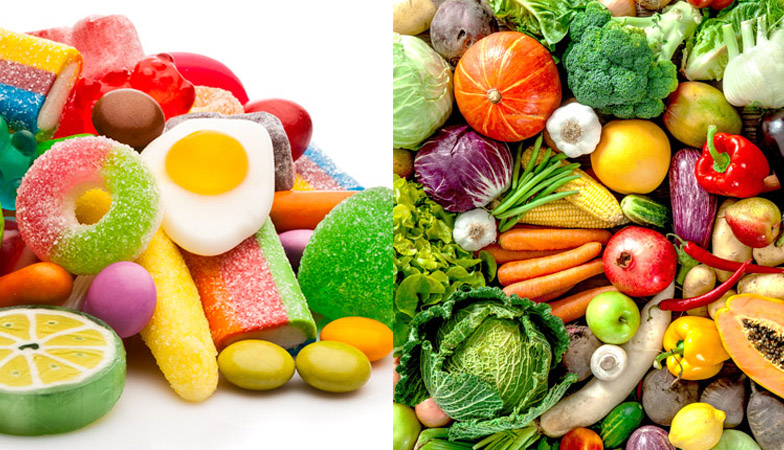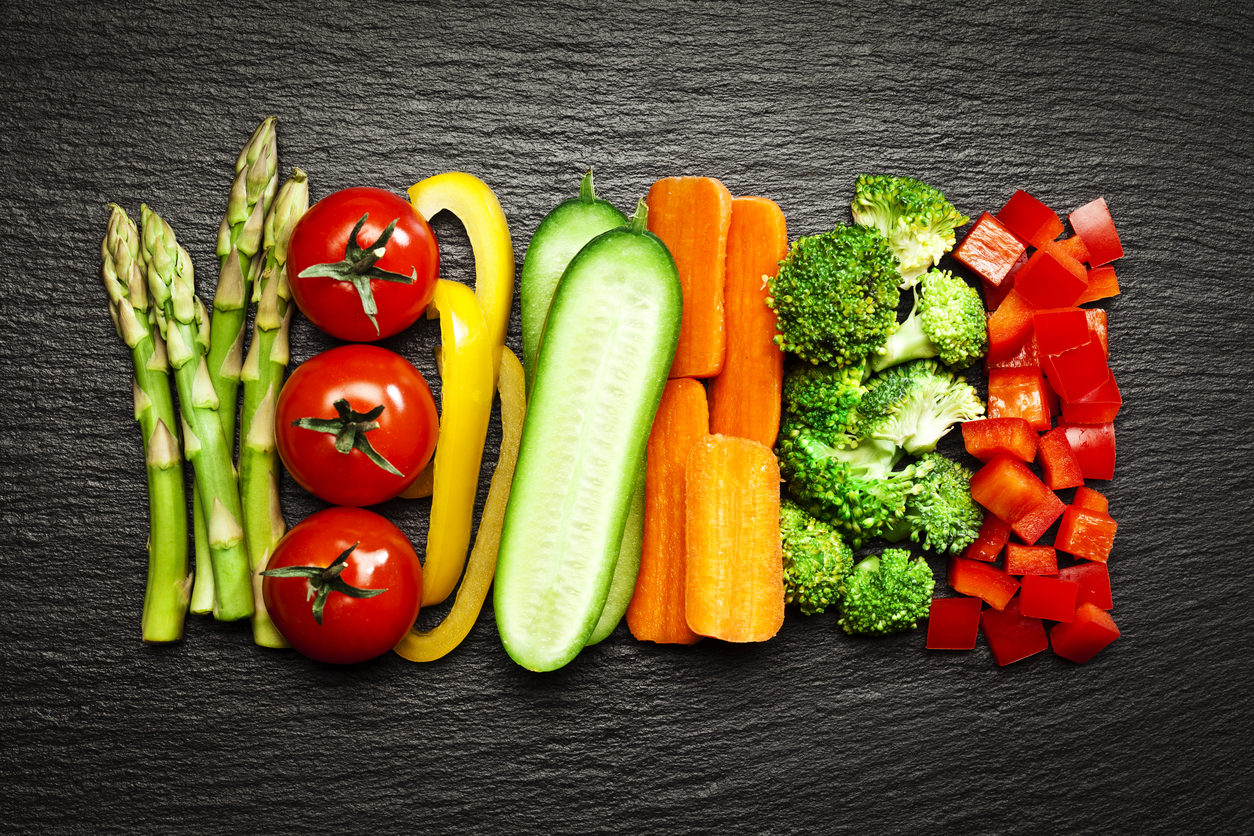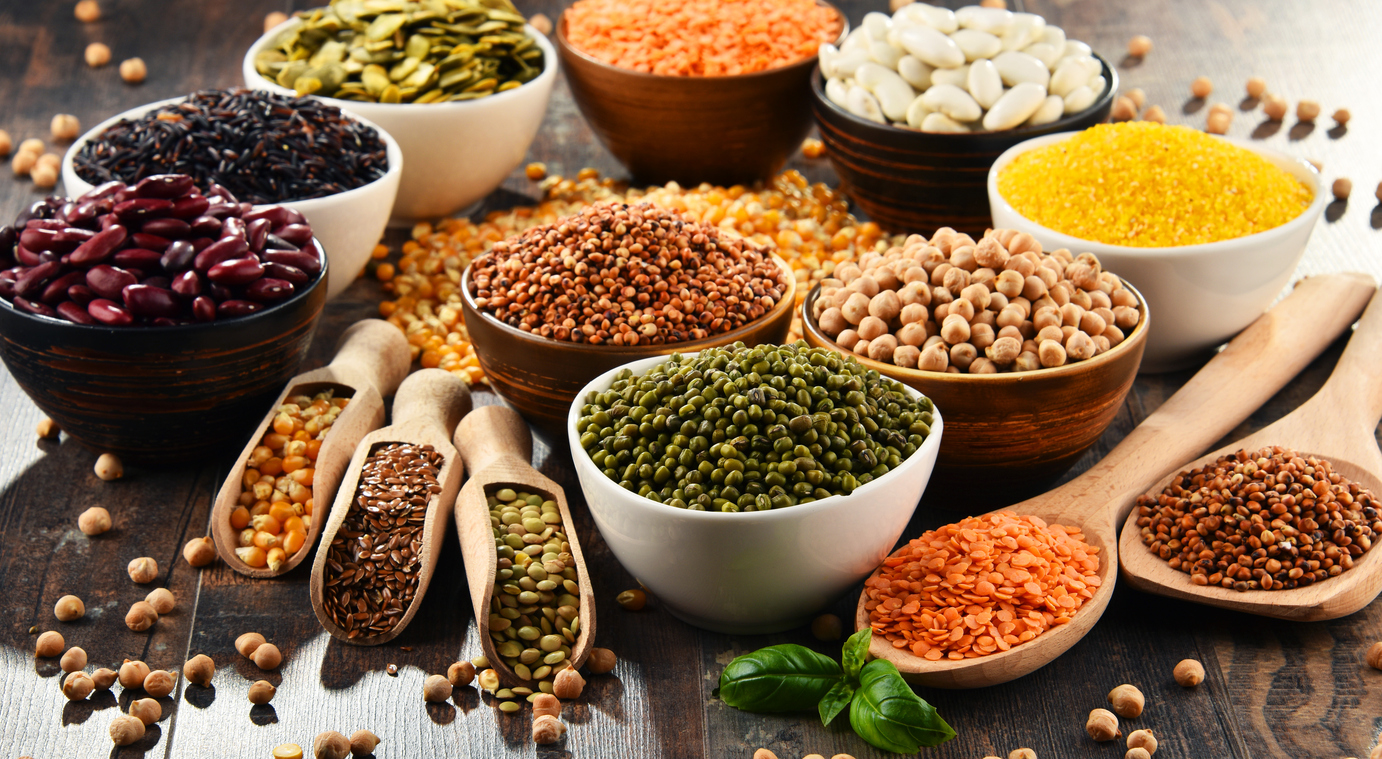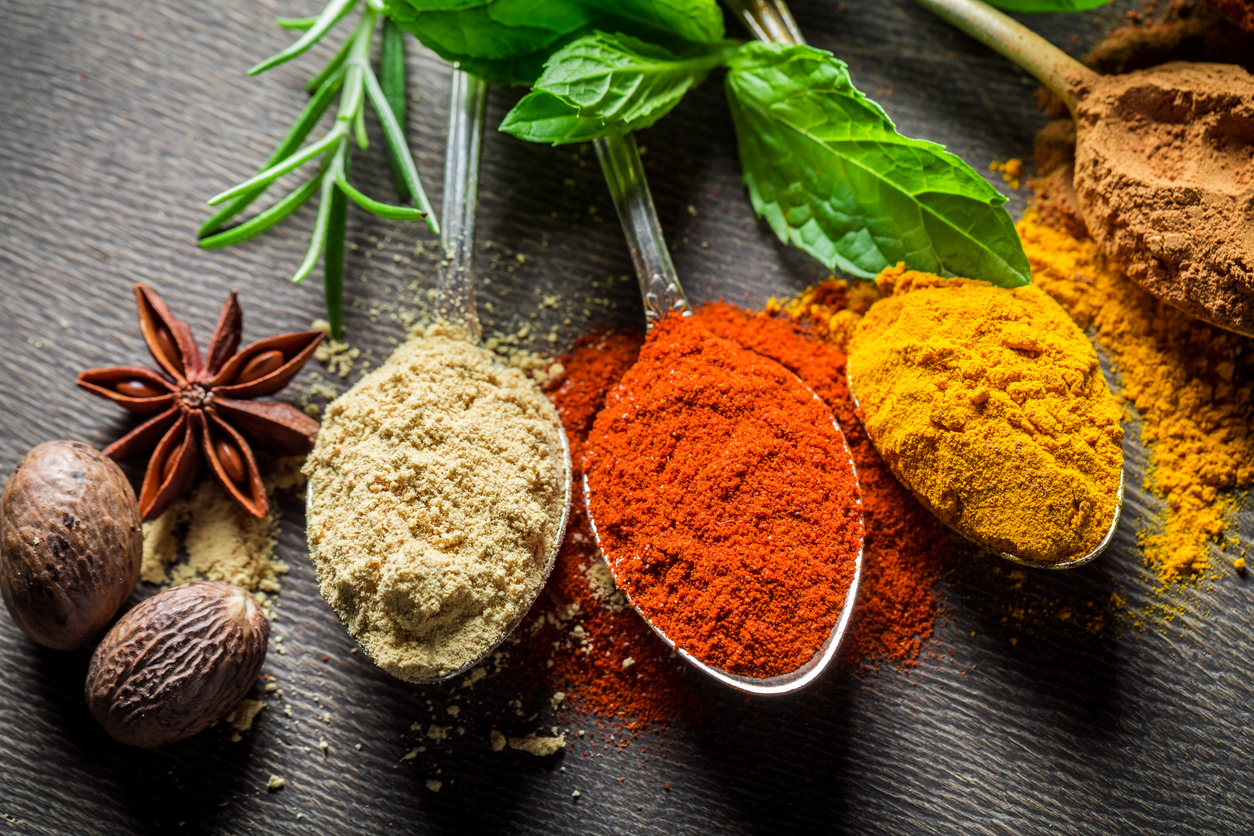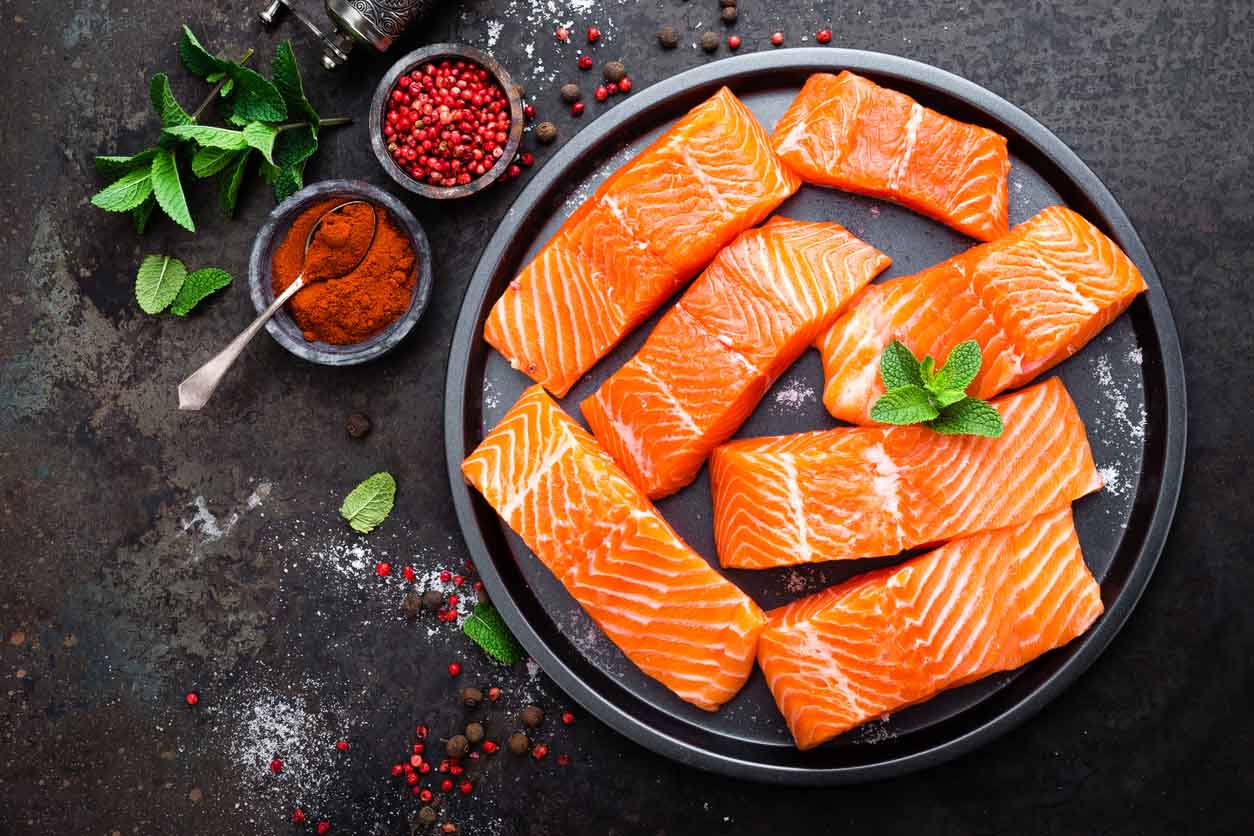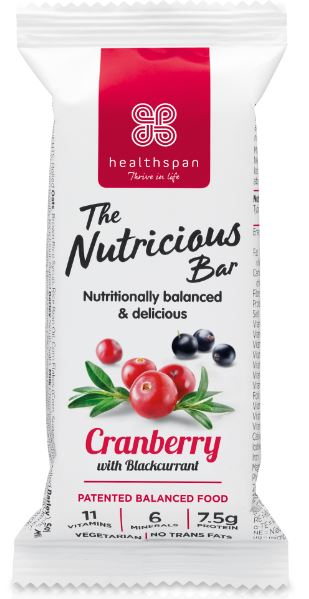Latest UK figures suggest we’re not eating as healthily as Instagram might suggest with staggering numbers not getting enough essentials such as fibre, iron and potassium. But the new nutrient poverty can be fixed with a few simple diet tweaks
Everyone is just. So. Busy. Right?
Between maintaining 17 social media accounts, getting our daily 12-15,000 steps and workouts, seeing our therapists and trying to have a semblance of a family and social life, we’re often left unable to have a perfectly balanced home cooked meal three times a day.
What’s more, unprecedented numbers of us are now giving up dairy, gluten and grains – the free-from market surged by 40 per cent to a whopping £230 million in the last 12 months alone!
Perhaps as a result, the UK is showing high levels of nutrient poverty. This simply means we’re eating the same calories, if not more, than we’ve always been eating but we’re getting fewer than ever of the nutrients our bodies really need.
According to the latest figures from the National Diet and Nutrition Survey just four per cent of us are getting adequate amounts of fibre (we’re getting an average of 19 grams compared to the recommended 30 grams daily) along with staggeringly low average intakes of essentials nutrients including iron, potassium and selenium.
Is this why you’re so tired?
Thanks perhaps to the rise in eating trends such as veganism our average red meat intake dropped nearly 20 per cent from 58 to 47 grams daily.
As a result, nearly a third of us staggeringly have iron intakes below the lower reference nutrient intake (LRNI) which is the recommended minimum amount set by Public Health England.
Iron rich foods include red meat of course, but also shellfish, fried fruits, beans, pulses, dark green leafy vegetables, beans along with canned and oily fish.
Are we getting enough nutrients?
Selenium is a nutrient essential to the functioning of the entire body, especially the thyroid. But a staggering 47 per cent of us don’t get enough of it. Found in nuts, shellfish, fresh tuna, wholewheat bread, wholegrains, meat and poultry, there is current concern that low levels of selenium in European and British soil lead to low levels in foods, so even if you do eat enough of these foods, your intake may still be low.
Potassium – a mineral that’s essential to muscle and nerve functioning as well as to help regulate fluid levels in the body – is found in foods such as bananas, dried fruits, vegetables, oily fish, wholegrains, beans and potatoes. It’s super important if you exercise too. And yet, a quarter of us don’t get enough.
Over one in ten women weren’t getting enough vitamin B2 or the essential minerals calcium, magnesium and iodine.
Why are we so food-rich but nutrient-poor?
When experts talk about the need for nutrient density in our food choices, they mean trying to get as many nutrients per calorie as we can.
For example, broccoli, contains just 34 calories per 100 grams but delivers a power punch of minerals such as magnesium, calcium and folate.
You can get more nutrient rich by eating more brightly and differently coloured foods – sorry, Wine Gums don’t count – see below for tips on how.
But don’t be fooled by those perfectly rainbow coloured plates piled high with delish-looking veggies – only 28 per cent of us are getting the recommended five serves of fruit and vegetables daily.
10 easy ways to get more nutrient rich
Leading nutritionist Robert Hobson brings you the simple tweaks that could increase your nutrient wealth without breaking your calorie bank
Eat two more serves of dark green leafy vegetables
‘A lack of vegetables has a key role to play in the new nutrient poverty,’ says Hobson. Just two more serves a day could make a huge difference, especially if you choose dark green leafy vegetables such as black kale, kavallo nero, spinach and collard greens. All contain more iron, magnesium, folate, potassium and calcium than other varieties’.
Eat more pulses and beans, especially if you’re dairy-free
‘The popularity of plant-based diets and going dairy-free may be contributing to low calcium intakes amongst some women. Not all milk alternatives are fortified with this mineral – but you can try and check for labels that are as a first step,’ says Hobson (see below).
‘Milk and dairy foods are a rich source of calcium but by far not the only source. ‘Pulses such as lentils, chickpeas and beans are a great source, along with tofu and dried fruits.’ Pulses and beans are also a great source of fibre, along with magnesium, iron, calcium and folate.
Switch to wholegrain and wholewheat breads and pasta
This can help increase intakes of fibre, magnesium, selenium and iron, says Hobson. Trouble is, most people are still choosing white varieties over brown. ‘Low carbohydrate diets may also have a role to play in our low fibre intakes,’ Hobson says.
Eat more fish
Despite every nutritionist on earth ever regularly telling us to eat more fish, especially the oily type, the RDNS figures show that we eat an abysmal eight grams a day, with many of us having none at all. ‘But just two servings per week would boost intakes of vitamin B2 along with iron, potassium, iodine, and selenium along with omega 3 fatty acids which help to reduce the risk of heart disease,’ asserts Hobson.
Eat more nuts and seeds
These can be easily added to dishes or eaten as a snack to significantly boost intakes of magnesium, iron, selenium and B2.
Add something extra to any dish
‘This is a great way to get more nutrients, without necessarily adding calories, says Hobson. ‘It could be adding a handful of vegetables, a sprinkling of seeds or drizzle of olive oil to a meal. A great way to do this is with breakfast smoothies, he advises. ‘Adding a handful of spinach or teaspoon of chia seed oil will boost your intake of iron, magnesium and omega 3 fatty acids,’ says Hobson.
Add dried spices to your dishes
Other easy nutrient powerhouse additions include adding turmeric to scrambled eggs, cumin to salad dressings, cinnamon to breakfast oats and smoothies and smoked paprika to minced or bean chilli, Hobson suggests. You can also use multiple spices to coat meats, fish and tofu.
Get clear on non-meat iron sources
Avoiding meat could be impacting your intake of iron, says Hobson. ‘Iron can also be sourced from non-meat sources such as shellfish, dried fruits, beans, pulses, dark green leafy vegetables, wholegrains, nuts and seeds.
‘But iron from plants is not as easily absorbed as iron from red meat, but teaming it with vitamin C helps,’ suggests Hobson. ‘Try drinking a juice with oats or fortified breakfast cereals or including peppers or citrus juices with a dish made of beans and pulses.’
Watch your omega-3s – especially if you don’t eat oily fish
‘Oily fish is a key source of omega 3 fatty acids and the fact that so many of aren’t eating it is a key cause for concern as our bodies don’t make this key nutrient,’ says Hobson. If you’re not a fan of oily fish, quinoa, walnuts, seeds and tofu contain a type of omega 3 but it needs to be converted by the body and the efficiency of conversion is poor, he asserts.
‘This is where omega-3 supplements may be needed,’ says Hobson. ‘Try taking a supplement such as Healthspan’s Super-Strength Omega 3 (£14.99 for 120 capsules).’
Eat more new-generation fortified foods – but choose wisely
You’re no doubt aware of fortified foods which have been around since the 1940s when manufacturers started adding vitamins A and D to margarine and milk, as well as B vitamins and iron to flour with the goal of eradicating nutrient deficiencies common at the time. Around the same time, Kellogg’s introduced a fortified breakfast cereal called Pep with vitamins B and D and later, many brands followed suit.
‘But just because a food is fortified with vitamins and minerals doesn’t make it healthy,’ says Hobson. ‘Breakfast cereals, snack bars and energy drinks make up a large percentage of fortified foods but these are usually high in sugar.
‘Even some of the latest additions to the market aren’t much better. A high protein Mars bar for example contains 22 grams of protein but three teaspoons of sugar! You could eat two hard boiled eggs, a bagel with canned tuna or cold meats to get a source of protein along with many other nutrients and virtually no sugar.’
7 expert-approved fortified food choices
The experts take a look at a new generation of fortified foods and suggests some healthy choices
The new smart bars
‘If you need to fill the gap between lunch and supper, snack bars such as Healthspan’s HiLo Bars (£8.99 for five bars) are a great source of magnesium (56mg per serve), protein (20g per serve) and fibre (9.6g per serve) and only 193 calories and less than two grams of sugar,’ suggests Hobson.
‘Likewise, their Nutritious Bars (£8.99 for six bars) are a great option for times when you need breakfast on the go and are caught in a rush. They are a source of 17 micronutrients, fibre, protein and efficient calories (299 a bar) to see you through to lunch’.
The right probiotic drinks
‘Opting for shots over supplements may suit some people more,’ says Hobson. ‘Products such as Yakult light (£2.95 for 7 shots) contain beneficial bacteria and only half a teaspoon of sugar.
Fortified milks
If you’re dairy free, take care to go for milk alternatives that are fortified with calcium such as Alpro Unsweetened Almond Milk (£1.80 for one litre).
Try high fibre, fortified cereals with less than one teaspoon sugar
‘Although the popularity of breakfast cereals has decreased slightly, they are still the most popular food option for Brits in the morning,’ says Hobson. ‘A new wave of protein porridges are launching which are super-fortified to boost the goodness of beta-glucans which we know are good for us. Vitality Porridge (10 sachets £11.99) is blended with chia, pumpkin, sunflower and linseed, fibre and contains 5 vitamins (B1, B3, B6, B12 and vitamin C.) and magnesium plus 20g protein per serving and less carbs and sugar than most supermarket porridges. Also, brands like Kellogg’s have Bran Flakes and All-Bran that are high in fibre and fortified with 25 per cent of the Recommended Dietary Intake (RDA) for nutrients including iron, B2 and folic acid in a 25 gram serve. They contain just under a teaspoon of sugar but if you have a generally healthy diet, this is pretty acceptable.’
Sweet treats
Dr Jen Nash a food psychologist on behalf of wellness brand Healthspan said ‘we’re the grazing generation.
We’re seeing the ‘fourth meal’ coming to the fore – not because of greediness but because we’re adapting our eating habits to suit our busy lifestyles and grazing and snacking is part of this.
Hobson says, ‘It’s about ‘Smart foods’ and clever snacking, if choosing a snack like chocolate for instance choose one that is fortified for example, Delice Noir, (7 x 25g bars £8.99) organic and sustainable vitamin-enriched Ecuadorian cocoa is blended with super fruit extracts of acai, baobab, blueberry and camu camu plus five vitamins and magnesium which we know for example we are deficient in.
More Healthista content
9 performance boosting foods proven by science
The e-bike craze – what could it REALLY do for you?
Can’t concentrate? This herb has been proven to help
7 ways to become that person who exercises at 6am
Like this article? Sign up to our newsletter to get more articles like this delivered straight to your inbox.



